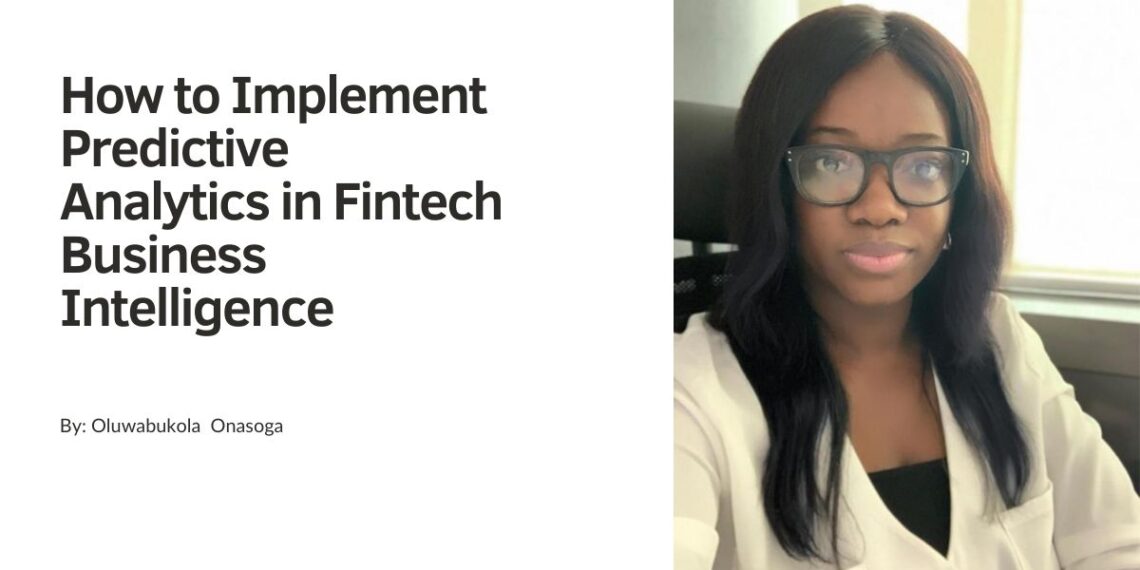“In God we trust, all others bring data.” – W. Edwards Deming
As the volume and complexity of financial data continue to surge, businesses in the fintech sector are turning to predictive analytics to gain a competitive edge. From fraud detection to customer behavior analysis, the applications are diverse and powerful.
Predictive analytics involves the use of statistical algorithms and machine learning techniques to identify patterns and make predictions about future events.
In the context of fintech business intelligence, this powerful tool can revolutionize decision-making processes, enhance risk management, and optimize customer experiences.
ADVERTISEMENTFrom fraud detection to customer behaviour analysis, the applications are diverse and powerful.
Why Predictive Analytics in Fintech?
The financial industry has always been data-driven, but the traditional approaches to analysis are no longer sufficient in the era of big data.
Fintech companies deal with vast amounts of structured and unstructured data, including transaction histories, customer behaviour, market trends, and more.
Predictive analytics offers a way to extract actionable insights from this wealth of information, enabling companies to anticipate market movements, assess credit risks, and personalize financial products and services.
Predictive analytics uses statistics, machine learning algorithms, and other methods to spot patterns and make predictions for businesses and their customers.
Key Steps to Implement Predictive Analytics in Fintech Business Intelligence
1. Set Clear Objectives
Before diving into predictive analytics, defining clear business objectives is crucial. Whether the goal is to reduce fraud, improve customer retention, or optimize pricing strategies, having well-defined objectives will guide the entire implementation process.
2. Data Collection and Integration
The quality of predictions is heavily reliant on the quality of data. Fintech companies must invest in collecting and integrating diverse data sources, including transactional data, social media, market data, and more. Clean and comprehensive datasets are the foundation of successful predictive analytics.
3. Choose the Right Algorithms
The selection of appropriate algorithms is a critical decision. Fintech companies should consider the nature of their data and objectives when choosing between regression analysis, decision trees, neural networks, or other machine learning algorithms. Some may even opt for ensemble methods to improve accuracy.
4. Build a Skilled Team
Implementing predictive analytics requires a team of skilled professionals, including data scientists, statisticians, and domain experts. Collaborative efforts between IT, data analysts, and business units are essential to ensure a holistic approach to predictive modeling.
5. Data Preprocessing and Feature Engineering
Preprocessing involves cleaning and transforming raw data into a format suitable for analysis. Feature engineering is the process of selecting and preparing variables that will be used in the predictive model. These steps are crucial for improving the accuracy and effectiveness of predictive analytics.
6. Model Training and Validation
Once the predictive model is built, it needs to be trained and validated using historical data. This step involves dividing the dataset into training and testing sets, fine-tuning the model parameters, and assessing its performance against known outcomes.
7. Integration with Business Processes
The ultimate success of predictive analytics lies in its integration with day-to-day business processes. Fintech companies should seamlessly incorporate predictive insights into decision-making workflows, risk management strategies, and customer interaction protocols.
8. Continuous Monitoring and Improvement
Predictive models are not static; they require continuous monitoring and refinement. Fintech companies should establish mechanisms to track model performance over time, update models as new data becomes available, and adapt to evolving business needs.
What are the advantages of Predictive Analytics in Fintech?
1. Risk Management
Predictive analytics enables fintech companies to assess and mitigate risks effectively. By analyzing historical data and identifying patterns, these tools can forecast potential risks, allowing organizations to take proactive measures.
2. Fraud Prevention
The world is challenged with cyber threats, and financial fraud is rampant. Predictive analytics serves as a robust defense mechanism. Algorithms can detect anomalies in transaction patterns, identify potential fraudulent activities, and trigger timely alerts.
3. Customer Segmentation and Personalization
Understanding customer behavior is crucial for delivering personalized services. Predictive analytics allows fintech businesses to segment their customer base, predict preferences, and tailor products or services accordingly, fostering customer loyalty and satisfaction.
4. Credit Scoring
Traditional credit scoring models are often rigid and limited. Predictive analytics introduces a dynamic approach, considering a broader range of variables and providing more accurate credit assessments, especially for thin-file customers or those with unconventional financial histories.
Why do Fintechs need predictive analytics?
There are multiple benefits to using predictive analytics, from improved risk management and better investment decision-making to enhanced fraud detection, more efficient operations, and overall competitive advantage.
- Predictive analytics supports effective risk assessment and management for FinTech
- Machine learning algorithms enable continuous adaptation to new fraud patterns, enhancing security measures.
- In lending, predictive analytics plays a crucial role in credit scoring and underwriting processes. It analyzes credit history, income, and spending patterns for more accurate creditworthiness assessments.
- By analyzing customer data, fintechs can offer tailored financial products, investment recommendations, and personalized user experiences, boosting customer satisfaction and loyalty.
- Fintechs leverage predictive analytics to optimize operations, customer retention, and pricing models. This includes forecasting demand, efficient resource allocation, and automating routine processes for increased efficiency.
While the benefits of implementing predictive analytics in fintech are substantial, challenges persist. Privacy concerns, data security, and the need for skilled professionals are notable hurdles.
However, as technology continues to advance, the future holds promising trends, including the integration of artificial intelligence (AI) and the development of explainable AI models to enhance transparency and trust.





